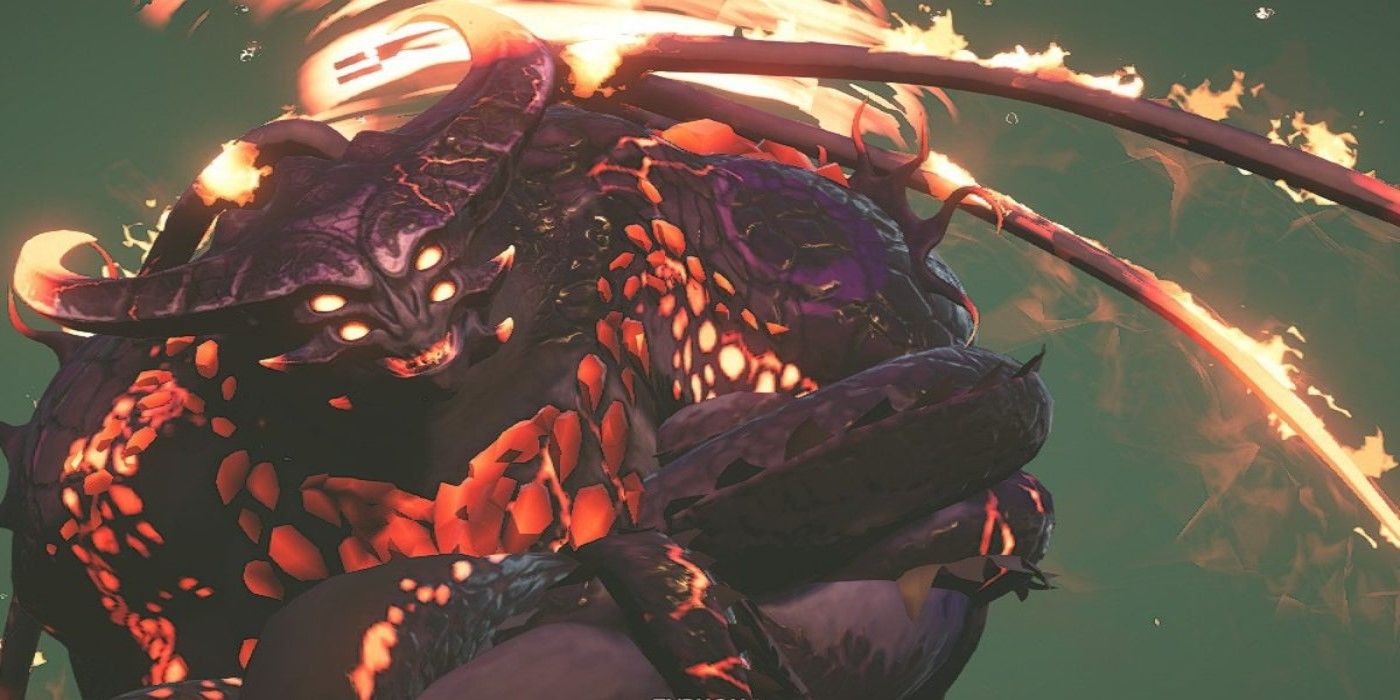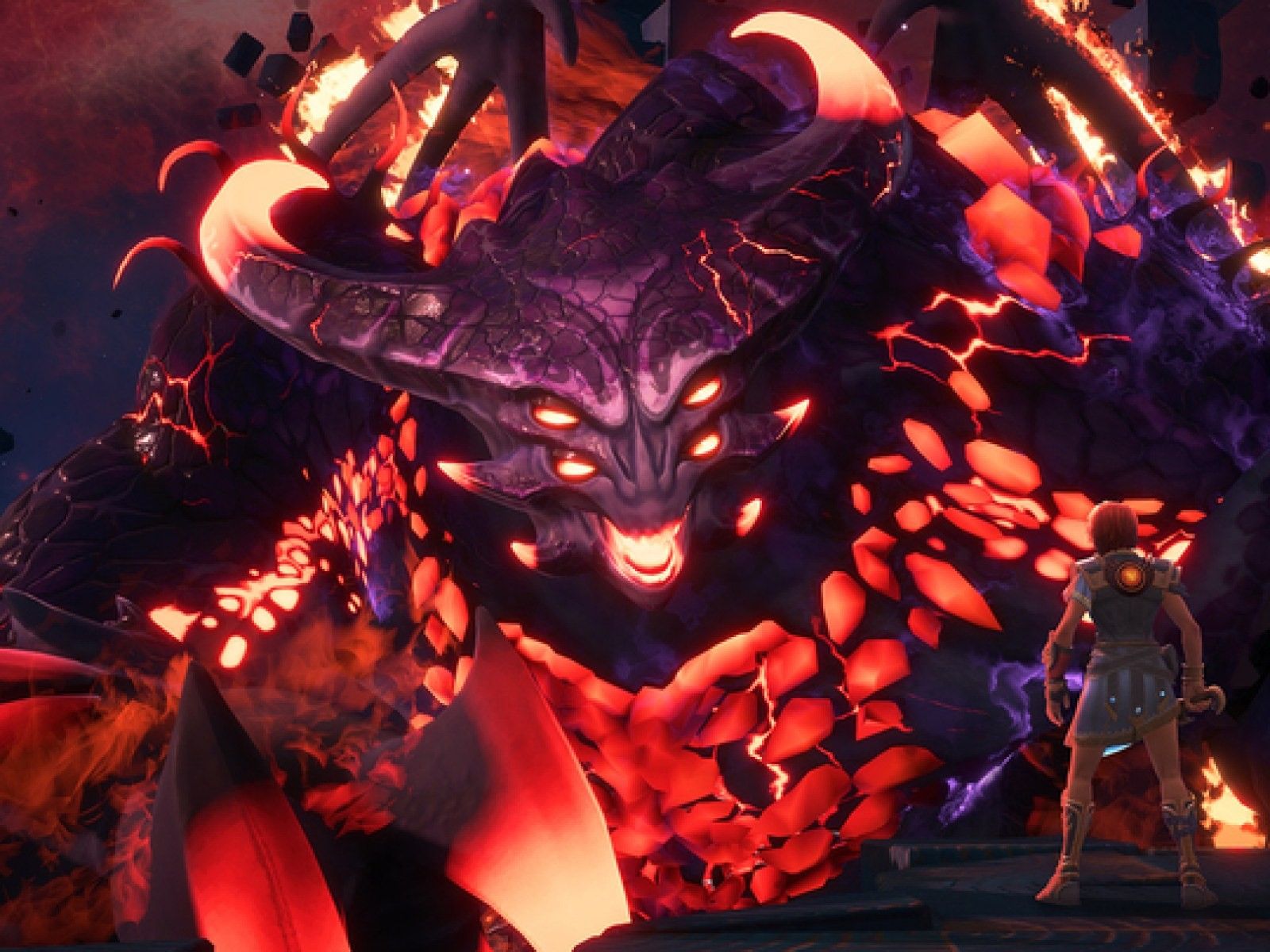Comparing Immortals Fenyx Rising's Typhon to Greek Mythology

As the name suggests, Immortals Fenyx Rising adapts Greek mythos for a modern audience, helping gods and fighting monsters throughout the game. Unsurprisingly, the same team that developed Assassin’s Creed Odyssey, Ubisoft Quebec, is behind Immortals Fenyx Rising, and wanted to create a game that focused solely on the mythology of Greece. Though it only released in December 2020, Immortals Fenyx Rising has been well-received by fans and critics. Originally, the game was titled “Gods and Monsters,” but that didn’t stick.
Despite its name change, Immortals Fenyx Rising does a fantastic job exploring Greek mythology and introducing players to the rich history that mythology offers. Zeus, Athena, Aphrodite, and many other well-known (and perhaps not as well-known) gods and goddesses are featured in the game as Fenyx helps restore them. The main villain, and prominent Greek mythological figure, is Typhon, who Ubisoft Quebec seemed to get spot-on.

Immortals Fenyx Rising isn’t the first game to be impacted by Greek mythology, but it may be the first to interpret it literally in a while. The Typhon of Greek myth, also known as Typhoeus, is the child of Tartarus and Gaea. Typhon is referred to as the father of all monsters and was married to Echidna—the mother of all monsters. The two of them gave birth to some of the most dastardly creatures in Greek mythology, including Cerberus, the Chimera, and even the Hydra.
Typhon’s wife, Echidna, was half-woman, half-snake, which perfectly suited him as a monster himself. Typhon is described as having 100 dragon heads and being absolutely massive. Even the gods were afraid of him, which is why Zeus eventually defeated him and cast him to the Underworld. Typhon is where the word “typhoon” comes from, as he was also the father of damaging winds, and mythology says when he was put in the Underworld it was under a volcanic mountain.

Immortals Fenyx Rising definitely captures the hulking presence of Typhon, along with his dragon heads and serpentine accents. Though there aren’t 100 dragon heads, the game gets a pass because that would probably be pretty difficult to render in-game. Typhon also glows like lava beneath his soot and ash-colored body, which is a nice nod to his volcanic imprisonment. The game gets his history right as well, recounting how he was defeated by Zeus once already before returning as the antagonist in the game.
Just as the myth says, Typhon is also immensely feared by all the gods in-game. He is ruthless and willing to cut deals with anyone necessary to achieve his goal of destroying and rebuilding the world by his design. Typhon is also the final boss battle in the game, which makes sense due to his great power and his role as the villain in Immortals Fenyx Rising. Players are able to fight him at the end of the ‘Vault of Typhon.’
Players must also fight Gorgons and Hydras throughout the game, who are some of Typhon’s most monstrous children, according to mythology. Immortals Fenyx Rising only credits Echidna as the Gorgon’s mother, but that makes sense because there are so many different tellings of Greek mythology. Hydras, on the other hand, are sent by Typhon to attack Athena, which is a nice nod to the original myth.
Immortals Fenyx Rising got a lot of things right in its characterization of Typhon, from his personality to his strength and power. He’s the final boss, as he deserves, and players spend the game learning how to defeat him and wield their own power.
Immortals Fenyx Rising is available now for Nintendo Switch, PC, PS4, PS5, Stadia, Xbox One, and Xbox Series X/S.

Post a Comment